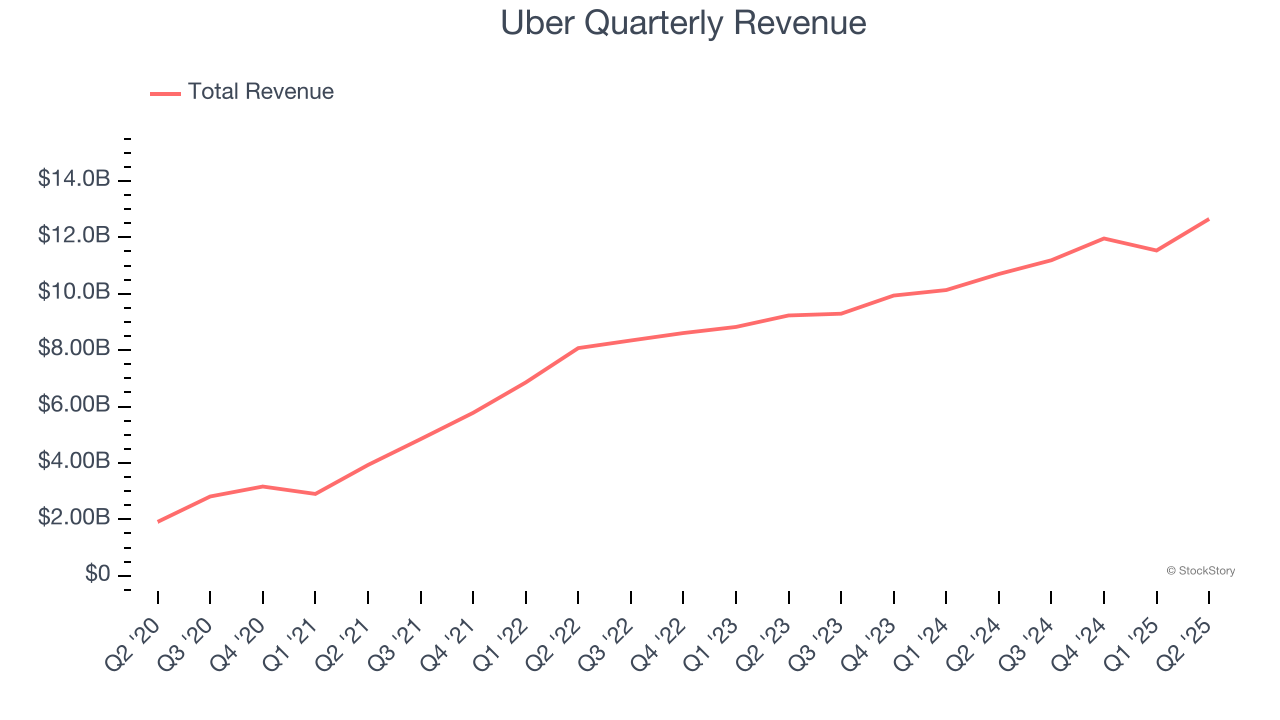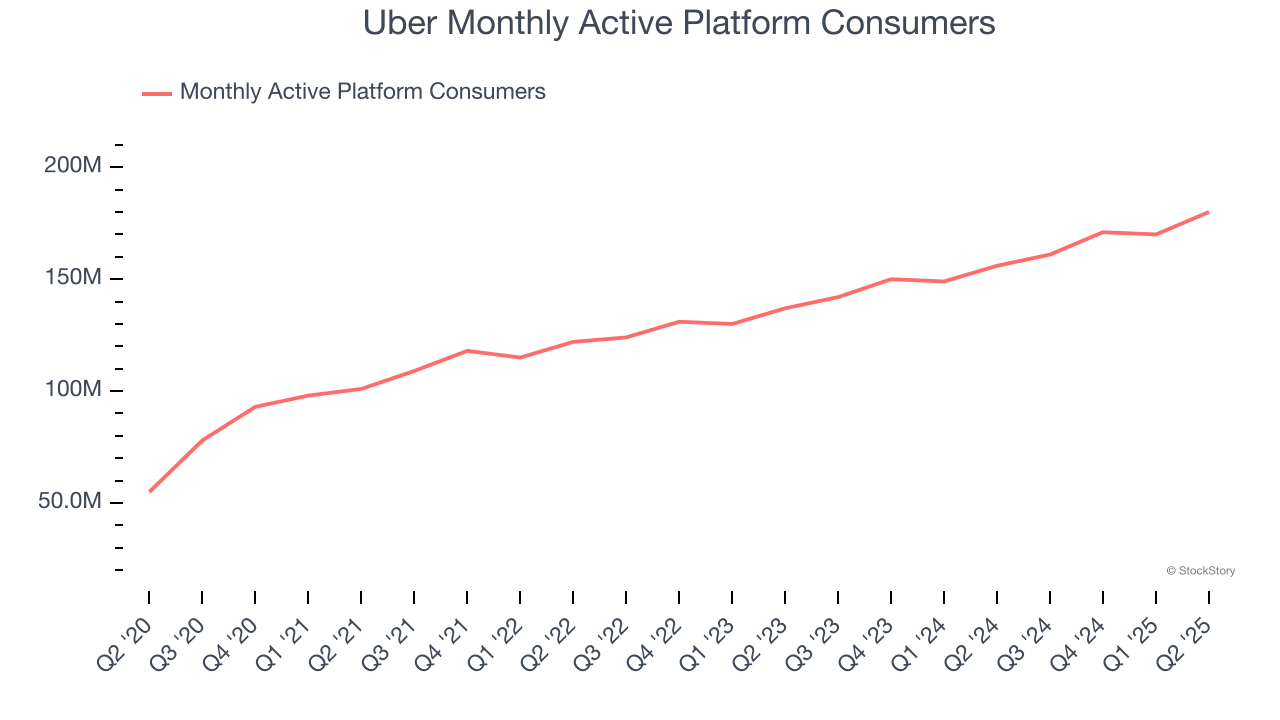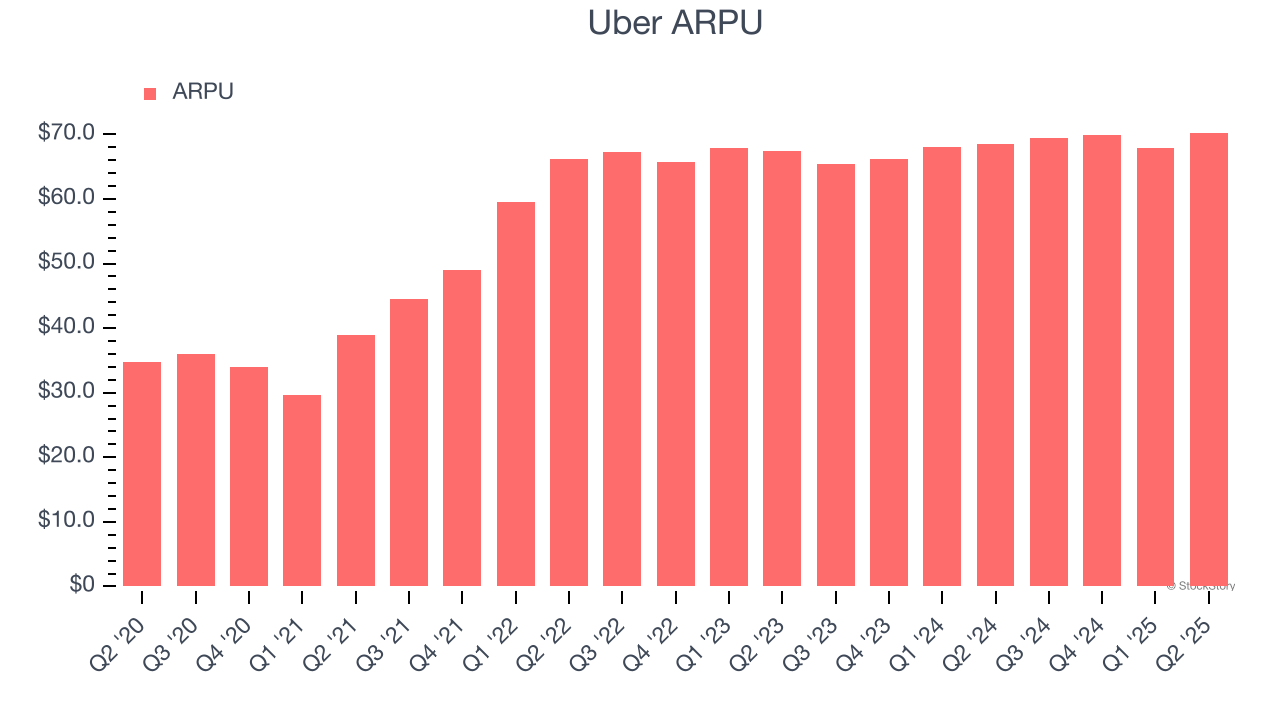
Ride sharing and on-demand delivery platform Uber (NYSE:UBER) reported Q2 CY2025 results topping the market’s revenue expectations, with sales up 18.2% year on year to $12.65 billion. Its GAAP profit of $0.63 per share was in line with analysts’ consensus estimates.
Is now the time to buy Uber? Find out by accessing our full research report, it’s free.
Uber (UBER) Q2 CY2025 Highlights:
- Revenue: $12.65 billion vs analyst estimates of $12.48 billion (18.2% year-on-year growth, 1.4% beat)
- EPS (GAAP): $0.63 vs analyst estimates of $0.62 (in line)
- Adjusted EBITDA: $2.12 billion vs analyst estimates of $2.11 billion (16.7% margin, in line)
- Operating Margin: 11.5%, up from 7.4% in the same quarter last year
- Free Cash Flow Margin: 19.6%, similar to the previous quarter
- Monthly Active Platform Consumers: 180 million, up 24 million year on year
- Company authorized a $20 billion share buyback
- Market Capitalization: $186.9 billion
“Our platform strategy is working, with record audience, frequency, and profitability across Mobility and Delivery,” said Dara Khosrowshahi, CEO.
Company Overview
Notoriously funded with $7.7 billion from the Softbank Vision Fund, Uber (NYSE:UBER) operates a platform of on-demand services such as ride-hailing, food delivery, and freight.
Revenue Growth
A company’s long-term sales performance can indicate its overall quality. Any business can put up a good quarter or two, but the best consistently grow over the long haul. Over the last three years, Uber grew its sales at an excellent 22.8% compounded annual growth rate. Its growth surpassed the average consumer internet company and shows its offerings resonate with customers, a great starting point for our analysis.

This quarter, Uber reported year-on-year revenue growth of 18.2%, and its $12.65 billion of revenue exceeded Wall Street’s estimates by 1.4%.
Looking ahead, sell-side analysts expect revenue to grow 15.1% over the next 12 months, a deceleration versus the last three years. We still think its growth trajectory is attractive given its scale and implies the market sees success for its products and services.
Unless you’ve been living under a rock, it should be obvious by now that generative AI is going to have a huge impact on how large corporations do business. While Nvidia and AMD are trading close to all-time highs, we prefer a lesser-known (but still profitable) stock benefiting from the rise of AI. Click here to access our free report one of our favorites growth stories.
Monthly Active Platform Consumers
User Growth
As a gig economy marketplace, Uber generates revenue growth by expanding the number of services on its platform (e.g. rides, deliveries, freelance jobs) and raising the commission fee from each service provided.
Over the last two years, Uber’s monthly active platform consumers, a key performance metric for the company, increased by 14.3% annually to 180 million in the latest quarter. This growth rate is among the fastest of any consumer internet business and indicates its offerings have significant traction. 
In Q2, Uber added 24 million monthly active platform consumers, leading to 15.4% year-on-year growth. The quarterly print was higher than its two-year result, suggesting its new initiatives are accelerating user growth.
Revenue Per User
Average revenue per user (ARPU) is a critical metric to track because it measures how much the company earns in transaction fees from each user. This number also informs us about Uber’s take rate, which represents its pricing leverage over the ecosystem, or "cut" from each transaction.
Uber’s ARPU growth has been subpar over the last two years, averaging 1.8%. This isn’t great, but the increase in monthly active platform consumers is more relevant for assessing long-term business potential. We’ll monitor the situation closely; if Uber tries boosting ARPU by taking a more aggressive approach to monetization, it’s unclear whether users can continue growing at the current pace. 
This quarter, Uber’s ARPU clocked in at $70.28. It grew by 2.5% year on year, slower than its user growth.
Key Takeaways from Uber’s Q2 Results
It was great to see Uber increase its number of users this quarter. We were also happy its number of monthly active platform consumers outperformed Wall Street’s estimates. On the other hand, EBITDA in the quarter was just in line. The market seemed to be hoping for more, and the stock traded down 1.1% to $88.45 immediately following the results.
So should you invest in Uber right now? What happened in the latest quarter matters, but not as much as longer-term business quality and valuation, when deciding whether to invest in this stock. We cover that in our actionable full research report which you can read here, it’s free.
